148 products
-
Japanese Glass Teapot With Two Styles Infuser
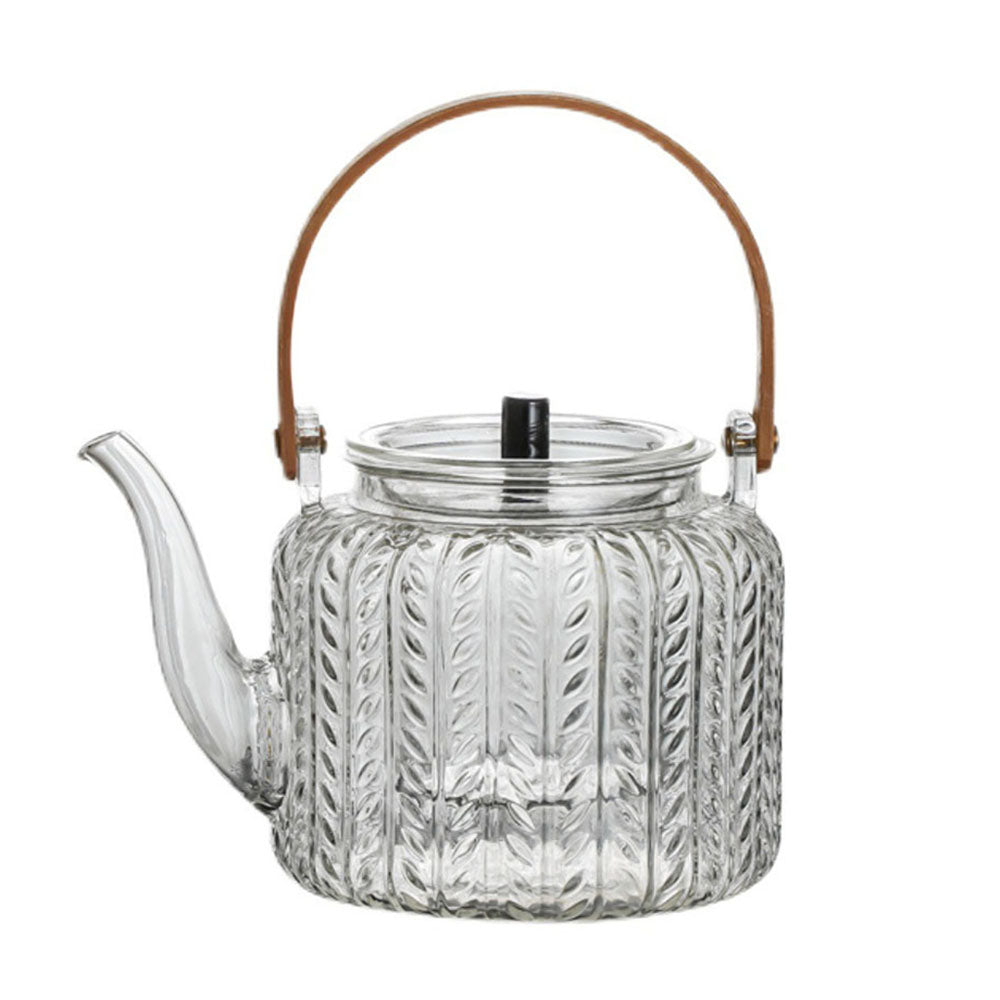 Vendor:Japanese Glass Teapot With Two Styles InfuserUmi Tea Sets
Vendor:Japanese Glass Teapot With Two Styles InfuserUmi Tea Sets- Regular price
-
$65.98 USD - Regular price
-
$79.18 USD - Sale price
-
$65.98 USD
Quick view
-
Old Purple Clay Hexagonal Teapot
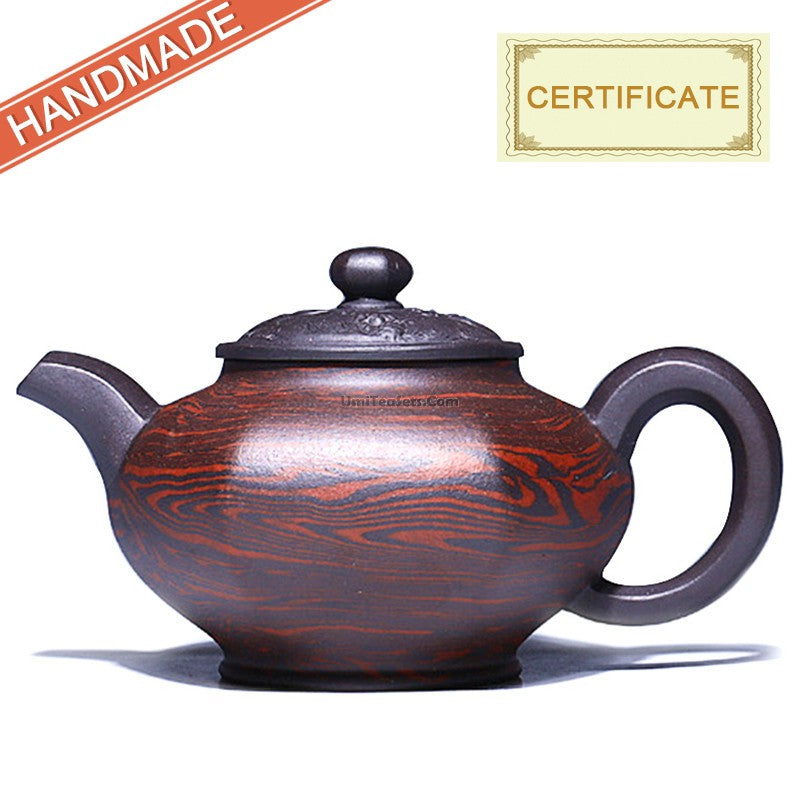 Vendor:Old Purple Clay Hexagonal TeapotMaker: 邵云琴
Vendor:Old Purple Clay Hexagonal TeapotMaker: 邵云琴- Regular price
-
$93.98 USD - Regular price
-
$112.78 USD - Sale price
-
$93.98 USD
Quick view
-
Glass Teapot With Water Steam Infuser
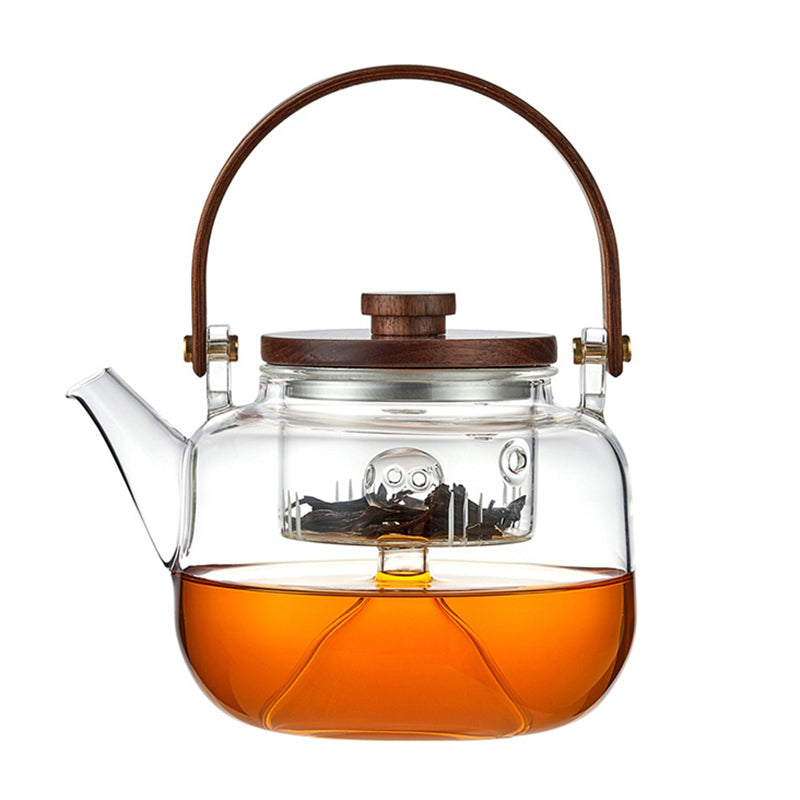 Vendor:Glass Teapot With Water Steam InfuserUmi Tea Sets
Vendor:Glass Teapot With Water Steam InfuserUmi Tea Sets- Regular price
-
$85.98 USD - Regular price
-
$103.18 USD - Sale price
-
$85.98 USD
Quick view
-
Thickened Glass Wooden Handle Teapot
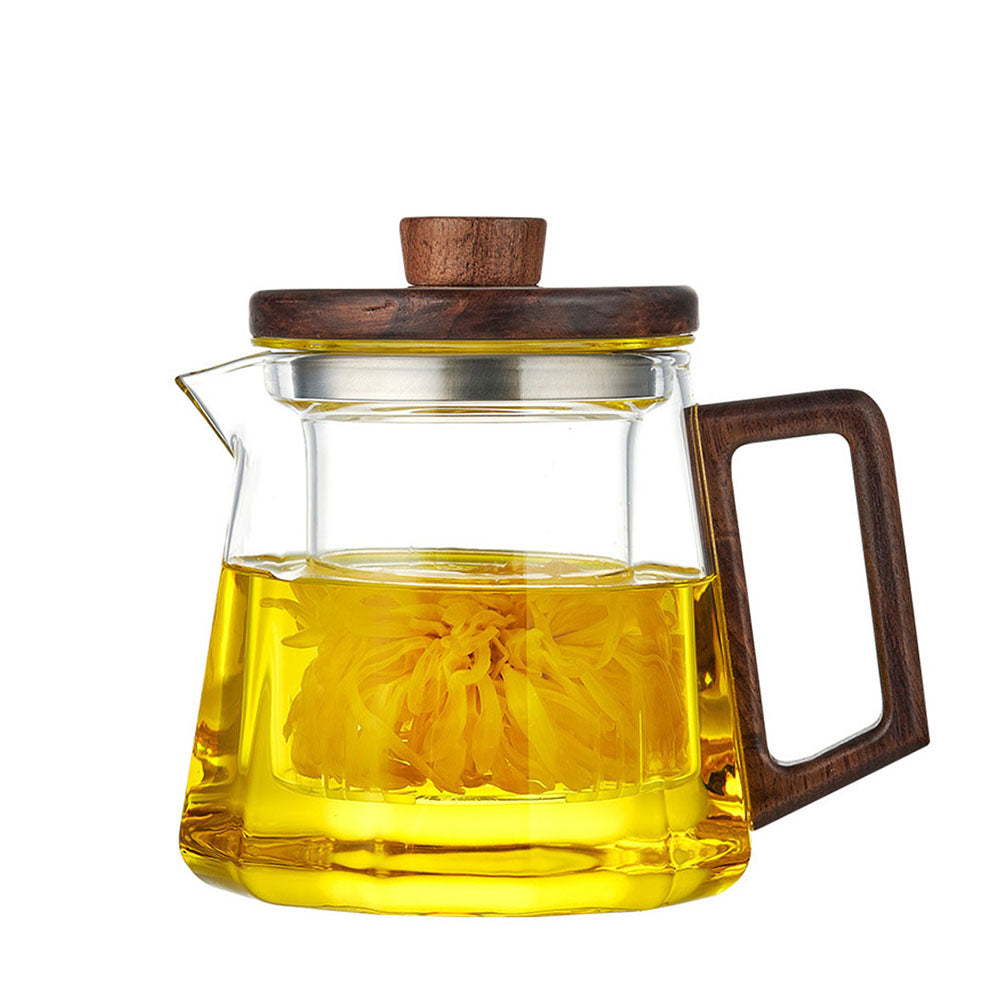 Vendor:Thickened Glass Wooden Handle TeapotUmi Tea Sets
Vendor:Thickened Glass Wooden Handle TeapotUmi Tea Sets- Regular price
-
$45.98 USD - Regular price
-
$55.18 USD - Sale price
-
$45.98 USD
Quick view
-
Yixing Boccaro Large Handmade Teapot
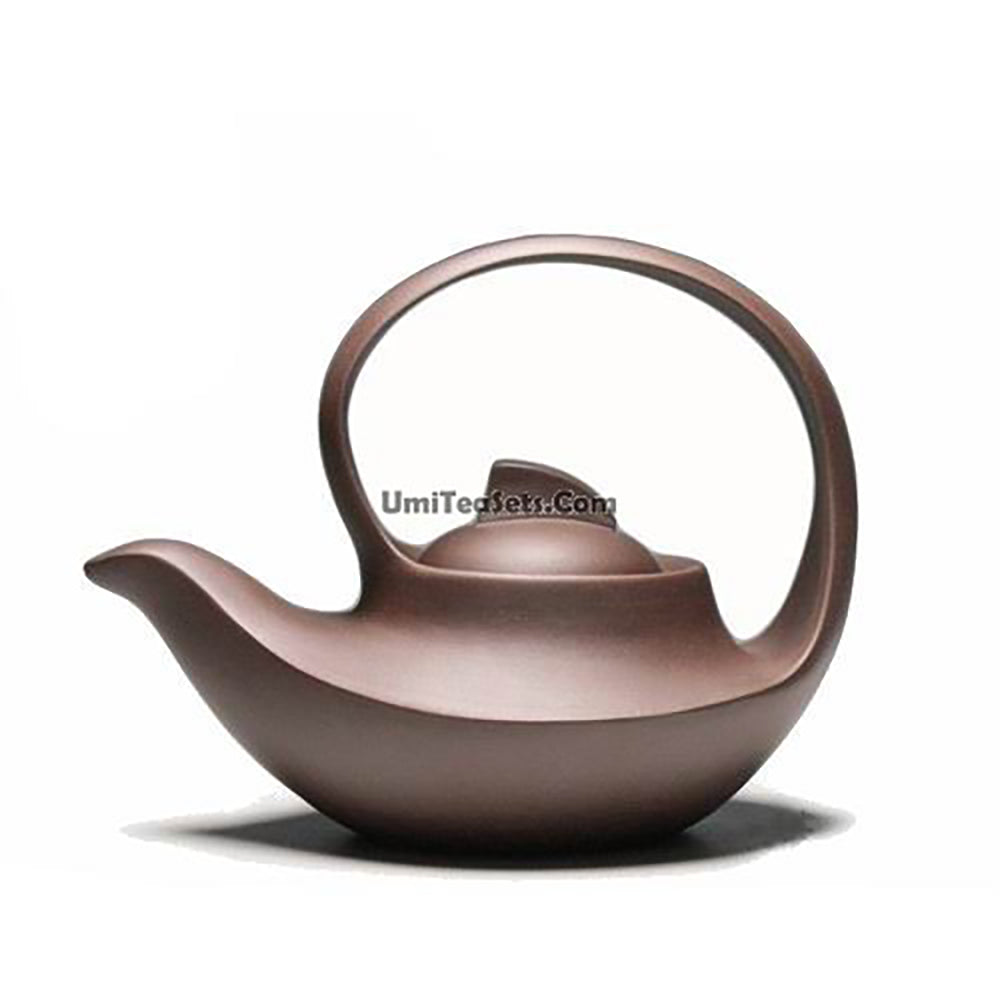 Vendor:Yixing Boccaro Large Handmade TeapotMaker: 顾国强
Vendor:Yixing Boccaro Large Handmade TeapotMaker: 顾国强- Regular price
-
$68.98 USD - Regular price
-
- Sale price
-
$68.98 USD
Quick view
-
Glass Teapot With Cognac Handle
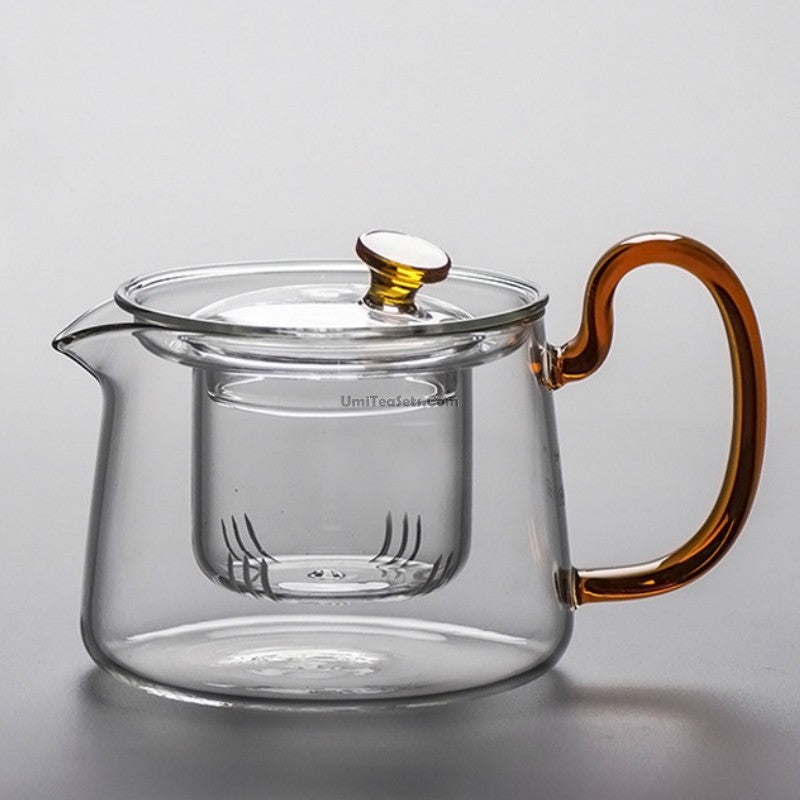 Vendor:Glass Teapot With Cognac HandleUmi Tea Sets
Vendor:Glass Teapot With Cognac HandleUmi Tea Sets- Regular price
-
$43.98 USD - Regular price
-
$52.78 USD - Sale price
-
$43.98 USD
Quick view
-
Yixing Purple Clay Three Legs Teapot
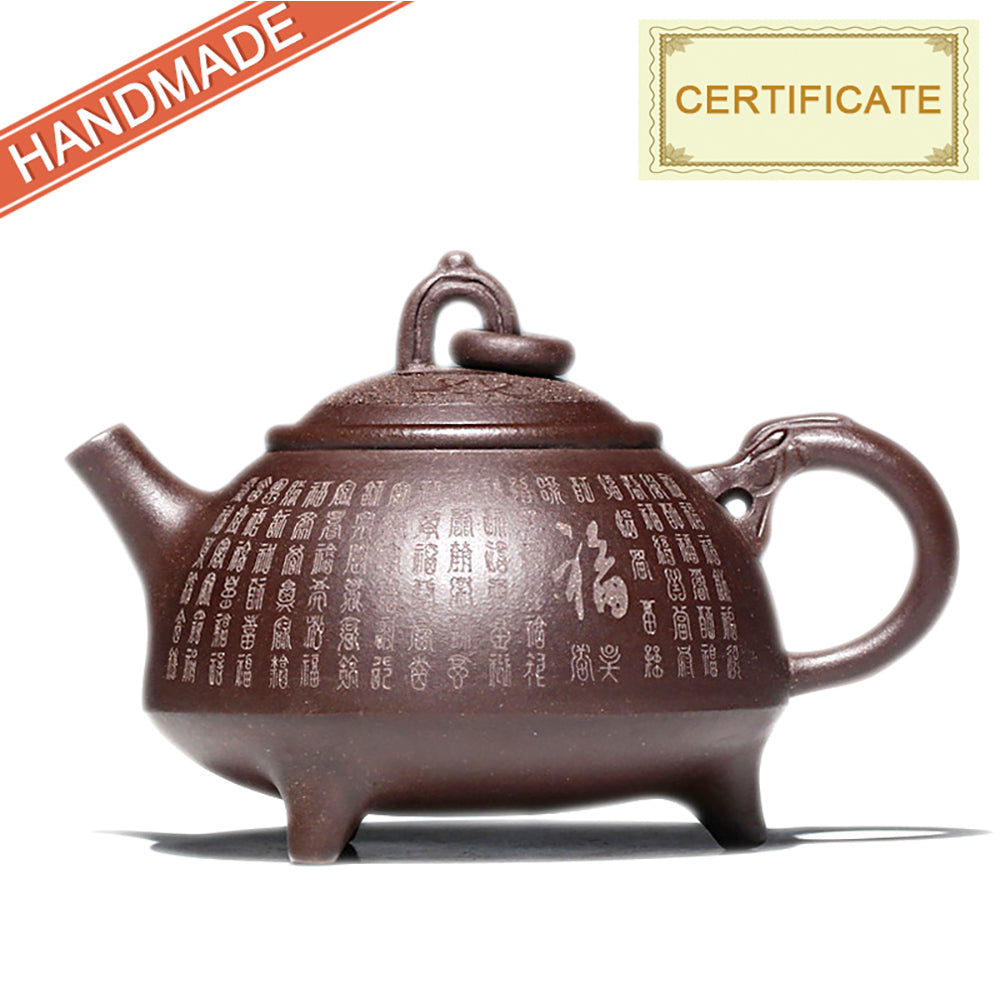 Vendor:Yixing Purple Clay Three Legs TeapotMaker: 孔祥生
Vendor:Yixing Purple Clay Three Legs TeapotMaker: 孔祥生- Regular price
-
$98.98 USD - Regular price
-
$118.78 USD - Sale price
-
$98.98 USD
Quick view
-
Yixing Black Clay Dragon Teapot
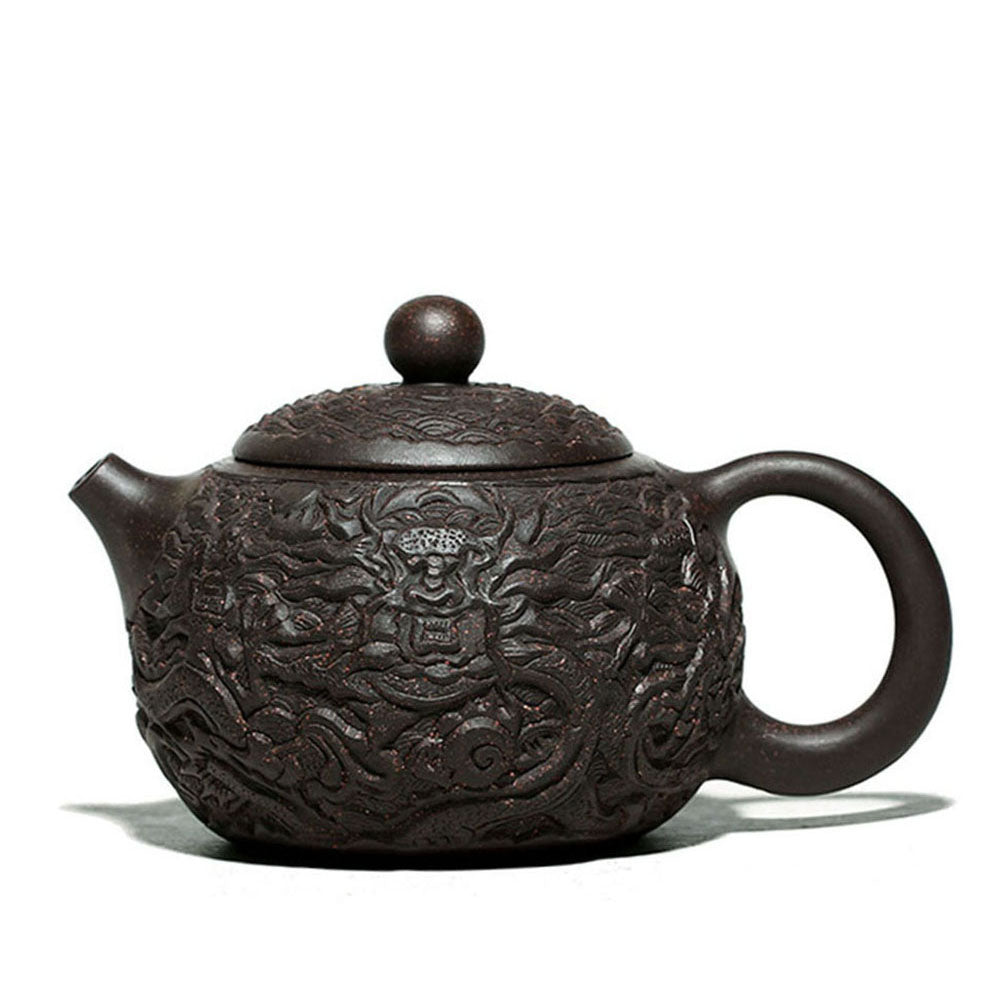 Vendor:Yixing Black Clay Dragon TeapotMaker: 谢道礼
Vendor:Yixing Black Clay Dragon TeapotMaker: 谢道礼- Regular price
-
From
$147.98 USD - Regular price
-
$177.58 USD - Sale price
-
From
$147.98 USD
Quick view
-
Yixing Red Clay Xi Shi Lotus Teapot
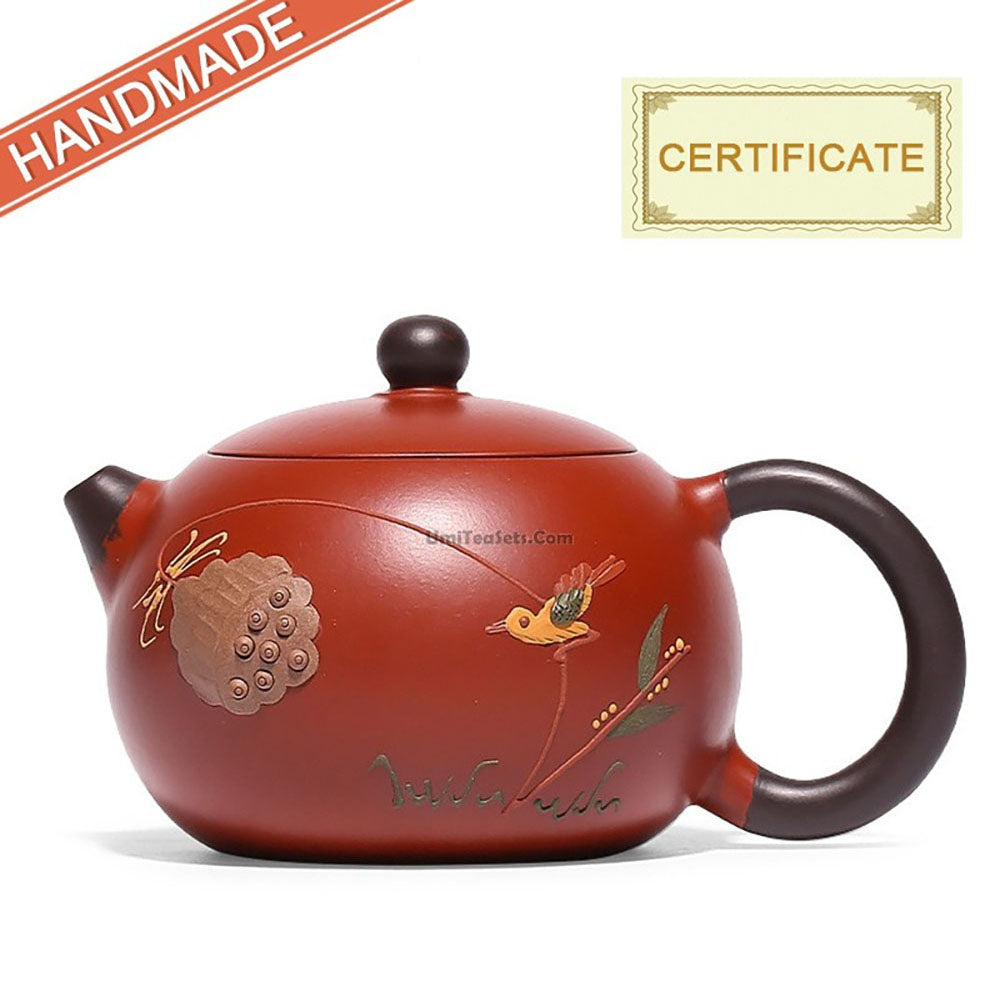 Vendor:Yixing Red Clay Xi Shi Lotus TeapotMaker: 沈惠芳
Vendor:Yixing Red Clay Xi Shi Lotus TeapotMaker: 沈惠芳- Regular price
-
$88.98 USD - Regular price
-
$106.78 USD - Sale price
-
$88.98 USD
Quick view
-
Cast Iron Peony Flower Teapot
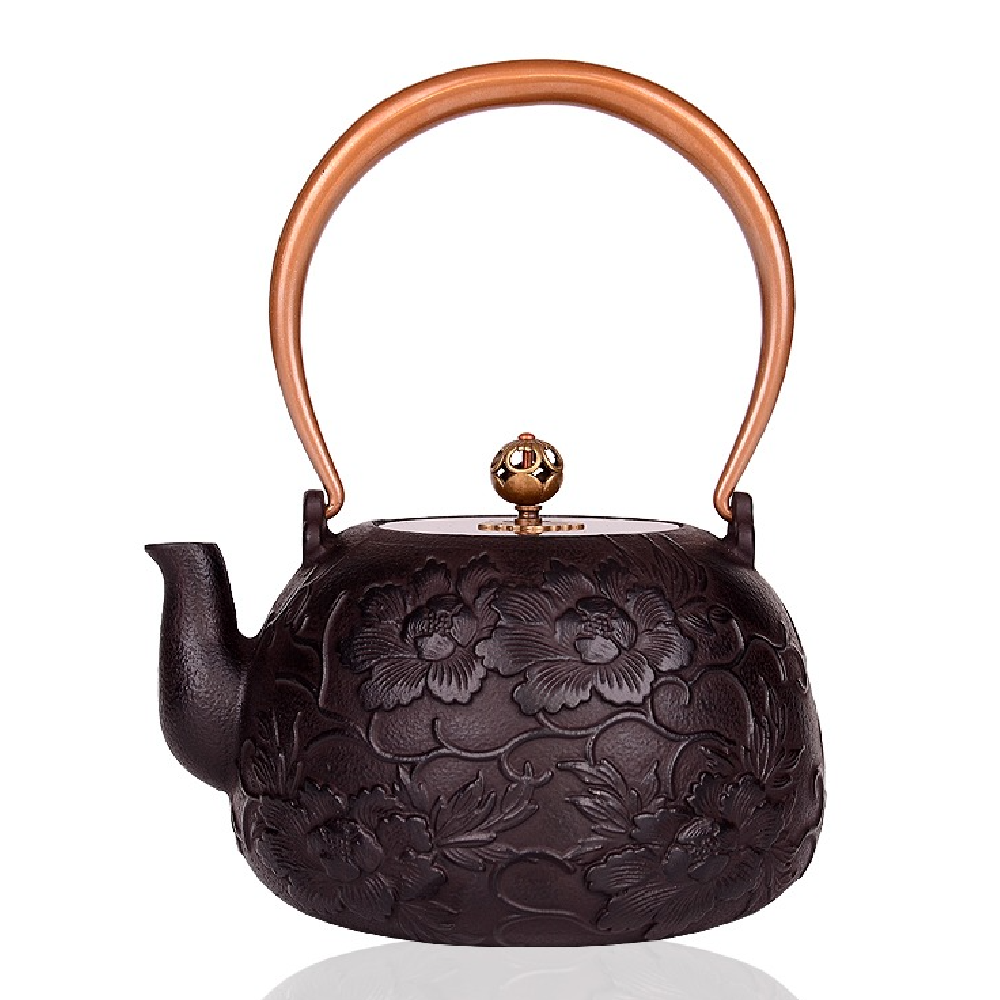 Vendor:Cast Iron Peony Flower TeapotUmi Tea Sets
Vendor:Cast Iron Peony Flower TeapotUmi Tea Sets- Regular price
-
$96.98 USD - Regular price
-
$116.38 USD - Sale price
-
$96.98 USD
Quick view
-
Yixing Red Clay Dragon Shi Piao Teapot
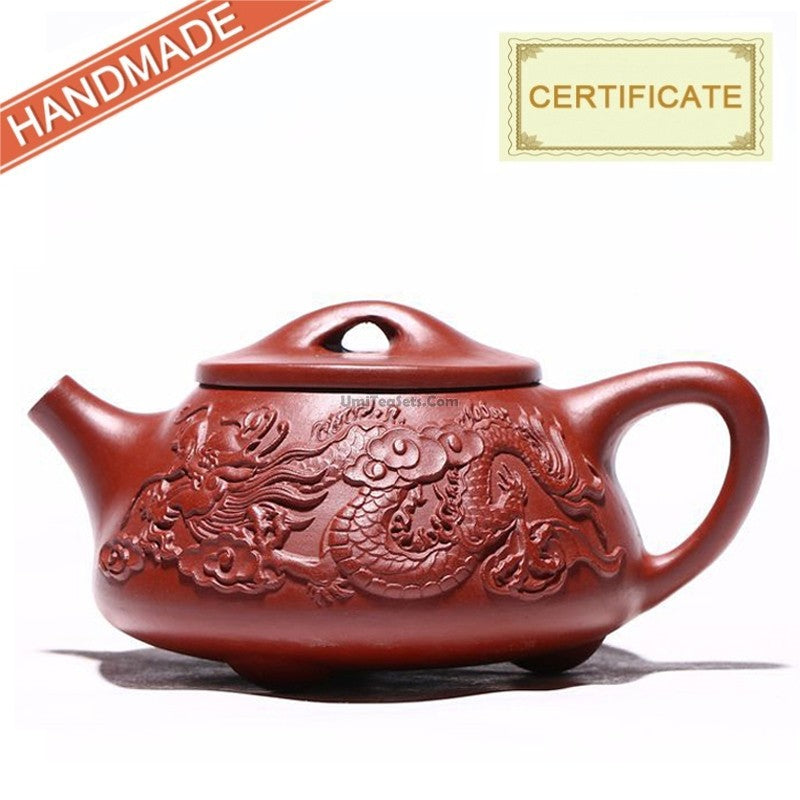 Vendor:Yixing Red Clay Dragon Shi Piao TeapotMaker: 陈孟君
Vendor:Yixing Red Clay Dragon Shi Piao TeapotMaker: 陈孟君- Regular price
-
$69.98 USD - Regular price
-
$83.98 USD - Sale price
-
$69.98 USD
Quick view
-
Japanese Cast Iron Golden Dragon Teapot
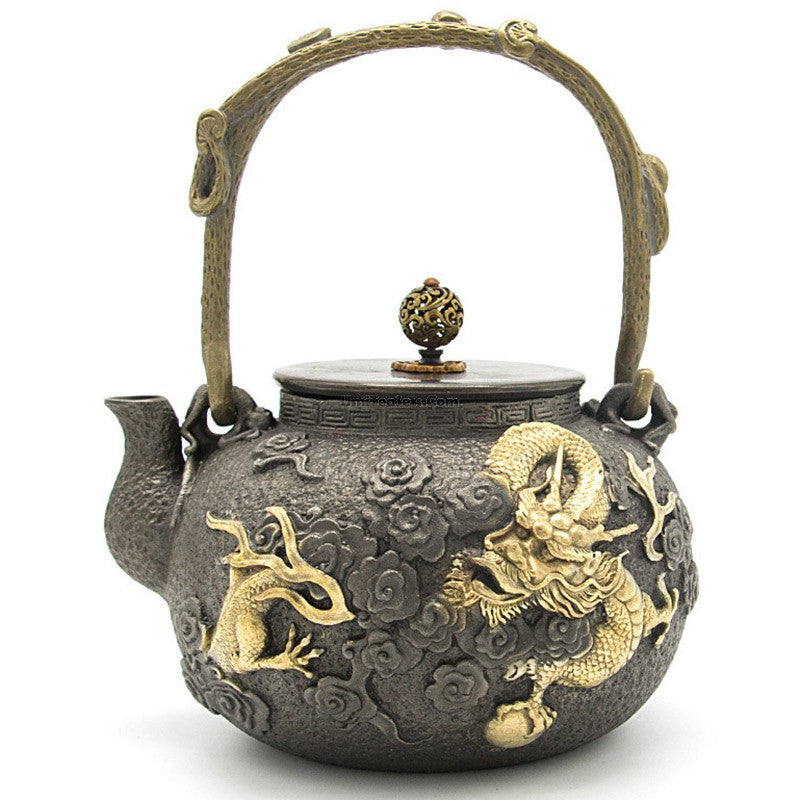 Vendor:Japanese Cast Iron Golden Dragon TeapotUmi Tea Sets
Vendor:Japanese Cast Iron Golden Dragon TeapotUmi Tea Sets- Regular price
-
$139.98 USD - Regular price
-
$167.98 USD - Sale price
-
$139.98 USD
Quick view
Are you looking for a perfect teapot to steep your tea? We currently offer over 200 teapots of different designs, materials, styles. Our teapots provides amazing durability, a stylish appeal and great functionality for brewing the teas of your choice. All of our tea pots are designed to enhance the flavors of your favorite teas. Perfect for serving tea to your friends whilst you are entertaining, you'll be able to chat for longer with the generous capacity of our tea pot. These best teapots is a must have for your home. We highly recommend our teapots for a perfect cup of tea every time. A well crafted piece for tea lovers and a perfect complement to your modern or traditional decor! See our catalog for our complete wholesale product listing. Ideal for everyday dining as well as tea parties, these teapots is available to purchase online or from one of our store today.
TOWARD THE END OF THE 16TH CENTURY, SEN NO RIKYU, ONE OF THE GREATEST JAPANESE TEA MASTERS, MADE THE FOLLOWING REMARK: "TEA IS NOTHING MORE THAN THIS: HEAT THE WATER, PREPARE THE TEA AND DRINK IT PROPERLY. THAT IS ALL YOU NEED TO KNOW." THE EXTREME SIMPLICITY OF THIS STATEMENT IS RATHER SURPRISING COMING FROM THE MAN WHO ESTABLISHED THE BASIC PRINCIPLES OF WHAT IS KNOWN TODAY AS "THE WAY OF TEA." ALTHOUGH FOR RIKYU THIS SIMPLICITY DEMANDED TOTAL PERSONAL INVOLVEMENT, IT IS TRUE THAT IN ESSENCE, TEA PREPARATION IS A SIMPLE PROCESS. HOWEVER, EXPERIENCE TEACHES US THAT TEA IS "MOODY," SO, IN SPITE OF BEING PREPARED IN AN IDENTICAL WAY, ONE DAY IT CAN TURN OUT PERFECTLY AND THE FOLLOWING DAY IT CAN BE LESS SUCCESSFUL.
KYUSU TEAPOTS
Japanese Kyusu teapots are distinguished by their hollow lateral handle, which is meant to facilitate handling and, according to the Japanese, provide a more ergonomic design. Light and elegant, they are often made of sandstone clay fired at a high temperature, which enhances the flavor of fine Japanese green teas. They are sometimes made of porcelain or even glass. Note that Japanese potters originally made teapots from porcelain and only started to use local sandstone in the 19th century. It was at this time too that the hollow lateral handle appeared.
Kyusu teapots are usually equipped with a very fine mesh that is useful for infusing finely cut Japanese green teas, as it keeps the leaves in the teapot. Handcrafted teapots often have an integrated clay strainer; whereas the strainer in industrially mass-produced teapots is often made of stainless steel.
Kyusu teapots vary in size. The largest are used for classic infusions, while the smallest are used for the senchado tastings. commonly practiced in Japan.
ENAMELED CERAMIC TEAPOTS
Ceramic has long been recognized for its quality and delicacy. The enamel coating makes these teapots suitable for all families of teas. They are particularly recommended for fragile, delicate teas, such as white teas or Chinese green teas, which are renowned for their delicacy and subtlety.
METAL TEAPOTS
There are many types of metal teapots, and their quality varies significantly. North African teapots are perfectly suited to brewing mint tea. Unfortunately, they may give tea a slightly metallic flavor; so they should not be used for the infusion of delicate teas. Stainless steel is the most suitable metal for teapots.
ENAMELED CAST-IRON TEAPOTS
Originally used in China as kettles, enameled cast-iron teapots are suitable for many types of tea. The enamel coating makes them easy to clean and prevents the tea from coming in contact with the cast iron. However, they are not recommended for delicate teas.
GLASS TEAPOTS
Glass teapots offer the same advantages of neutrality and versatility as ceramic teapots. Their smooth surface is suitable for the infusion of all types of tea and will not affect the taste. In addition, thanks to the transparency of the glass, the leaves can be seen unfurling and dancing in the water and the color of the infusion can be fully appreciated. Most designs are equipped with an infusion strainer that is removed when preparing tea in bags.
CHOOSING A TEAPOT
As pottery is an art in which, as in the art of tea, many manufacturing techniques and various quality standards exist, there is a wide choice of teapots on the market Here are the main criteria that should be considered in terms of the material, the size, the shape and the quality of a teapot:
· The material. Cast iron, clay or ceramic? First you must decide what kind of tea you want to drink. Ceramic and enameled cast-iron teapots are suitable for many types of tea. Clay teapots are ideal for black, Pu er and wulong teas. Because they are porous and "remember" the tea, clay teapots can enhance a tea's flavor.
· Size. Do not buy a teapot that is too large. Some delicate teas need to be infused in a small quantity of water to release their precious fragrances. A Chinese saying claims that the smaller the teapot, the better the tea.
· Shape. To enhance your tea-drinking experience, choose a teapot that is suited to your hand. Handles come in many different shapes and sizes, so always lift a teapot before purchasing it to ensure it will pour well and that you like the grip.
· Quality. A good teapot will age well. Beware of cheap teapots, especially in cast iron or clay, as they may deteriorate quickly.
Preparing Tea in a Teapot
Tea reacts to various factors that one must keep in mind in order to get the best possible flavor from an infusion. The ratio of tea to water, the temperature of the water and the length of the infusion are all important factors to consider, regardless of the infusing method being used. Following the instructions below will help you prepare tea that tastes perfect nearly every time.
· Start by warming your teapot with hot water: fill to about a third, wait 30 seconds, then discard the water You can also warm the outside of the teapot.
· Add the leaves.The basic recipe requires one heaping teaspoon (5 ml) - the equivalent of 1/14 to 1/10 ounce (2 to 3 grams) - for every 1 cup (250 ml) of water. You can place the leaves directly into the teapot If you use a tea strainer, make sure it is as large as possible in relation to the teapot. The more space the leaves have to unfurl in the water; the better the tea will be. Tea eggs are not recommended, as they compress the leaves.
· Pour the water over the leaves. Water quality and temperature are important. You should never pour boiling water on tea leaves, as it can scald the leaves and destroy their delicate aroma. The higher the quality of a green or white tea, the less resistance it will have to hot water.
· Let the leaves infuse for the required time, which is usually between three and seven minutes. Small, broken leaves will infuse more rapidly.
· Stop the infusion by pouring the liquid into another container or by removing the filter used for infusion. An infusion must be controlled to be successful. If it is too short, the character of the liquid will not be revealed; if it is too long, the bitterness of the tannins will overwhelm the aromas.
· Serve and savor.
The table on the following pages presents general guidelines for the preparation of tea.












